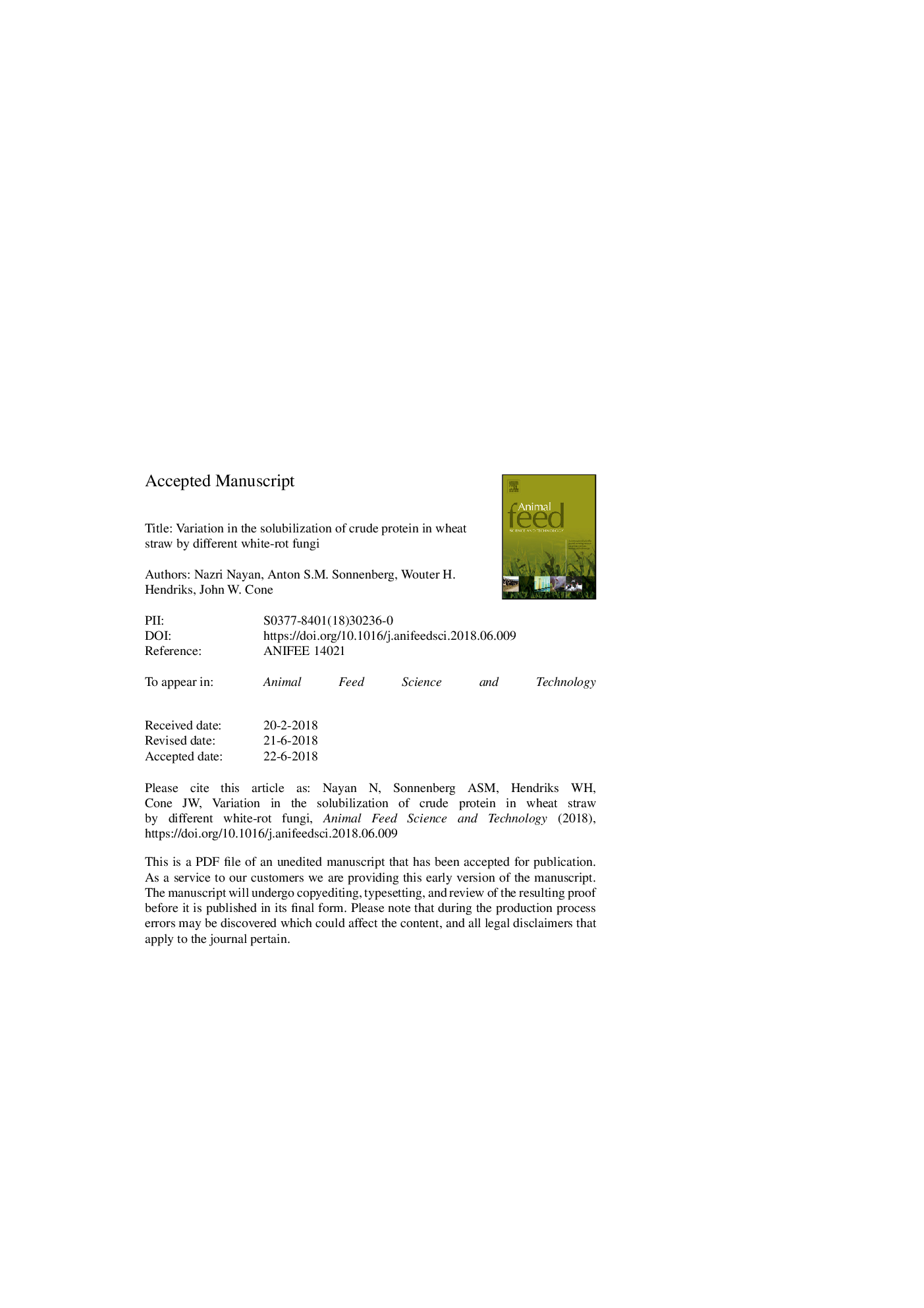| Article ID | Journal | Published Year | Pages | File Type |
|---|---|---|---|---|
| 8490917 | Animal Feed Science and Technology | 2018 | 30 Pages |
Abstract
Besides their unique ability to depolymerize cell wall components, white-rot fungi are known to assimilate nitrogenous compounds from substrates. This modification may change protein solubility and fermentation in the rumen. To investigate this, the crude protein (CP) in fungal treated wheat straw (3 fungal species, 2 strains each) was fractioned according to the Cornell Net Carbohydrate and Protein System (CNCPS) and assessed for in vitro protein fermentation using a modified gas production technique (IVGPN). Results showed that fungi increased fraction A (instantaneously soluble CP; â¼2.6 times) and B1 (rapidly degradable; â¼1.2 times); and decreased the slowly degradable fraction B3 (â¼41.6%) and unavailable fraction C (â¼48.3%). The IVGPN of straw treated with Ceriporiopsis subvermispora strains were not different to the control, but increased by 30.2 to 47.1% in Pleurotus eryngii and Lentinula edodes strains. The IVGPN was significantly (Pâ¯<⯠0.01) correlated to all fractions of CP, except fraction B1 and B2 (intermediately degradable). All fungi also increased the arginine (â¼56%) and lysine (â¼15%) contents. This study shows the importance of assessing the protein solubilization by different fungal strains, which can uncover unique mechanisms in the cell wall depolymerization.
Related Topics
Life Sciences
Agricultural and Biological Sciences
Animal Science and Zoology
Authors
Nazri Nayan, Anton S.M. Sonnenberg, Wouter H. Hendriks, John W. Cone,
